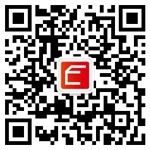

- Description
- Additional
Description
Details
RACTIVITY | Human |
SENSITIVITY | <5 pg/mL |
ASSAY RANGE | 5-1000 pg/mL |
REAGENTS PROVIDED | IL-12 MICROTITER PLATEBIOTIN CONJUGATEAVIDIN CONJUGATEIL-12 STANDARDCALIBRATOR DILUENT ICALIBRATOR DILUENT IIWASH BUFFER (20X/96 wells, 30X/192 wells)SUBSTRATE ASUBSTRATE BSTOP SOLUTION |
INTENDED USE
This Human Interleukin 12 (P70) ELISA Kit is to be used for the in vitro quantitative determination of human interleukin 12 (IL-12) concentrations in serum, plasma, cell culture supernatant, and other biological fluids. This kit is FOR LABORATORY RESEARCH USE ONLY and is not for use in diagnostic or therapeutic procedures.
INTRODUCTION
Interleukin 12 (IL-12), also known as natural killer cell stimulatory factor (NKSF) and cytotoxic lymphocyte maturation factor (CLMF), is a pleitopic cytokine originally identified in the medium of cultured EBV-transformed RPMI-8866 cells) (1-3). IL-12 is a 75kDa glycoprotein heterodimer composed of two unequal, genetically-unrelated subunits. The smaller subunit (p35) has homology to IL-6 and G-CSF while the larger subunit (P40) shows recognizable similarity to the soluble receptor for IL-6, leading to the suggestion that IL-12 might have evolved from a cytokine/soluble receptor complex (2-6). Cells known to produce IL-12 include monocytes/macrophages, B cells and connective tissue type mast cells (7-10). IL-12 shows species specificity with human IL-12 reportedly showing minimal activity in the murine system (3,7). For reviews on IL-12, see references (8-12).
Each subunit of IL-12 apparently arises from a single copy gene. The transcription of the subunit of the subunit mRNAs is closely co-ordinated, although an excess of the larger subunit (P40) has been shown to be produced by B cells in addition to active IL-12 (1,3). Expression of the smaller chain (p35) is reported to be enhanced by simultaneous expression of the larger chain (p40). Although IL-12 activity cannot be demonstrated in the absence of either chain, the presence of only p40 is associated with inhibition of IL-12-associated activities (3,4). As suggested by their names, p35 has a native molecular weight of 35 kDa while p40 has a native molecular weight of 40 kDa. In humans, p35 is 197 amino acid residues in length with a predicted molecular weight of 22.5 kDa. The molecule contains 7 cysteine residues plus 3 potential N-glycosylation sites and the molecule is believed to be heavily glycosylated. The p40 subunit is 306 amino acid residues in length with a predicted molecular weight of 34.7 kDa. The molecule contains 10 cysteine residues and four potential N-linked glycosylation sites (3). The murine p35 subunit shows 60% sequence identity with the corresponding human subunit and is 193 amino acid residues in length with seven conserved cysteines and one possible N-linked glycosylation site. Murine p40 shows 70% sequence identity to human p40 and is 313 amino acid residues in length with eleven conserved cysteines and three potential N-linked glycosylation sites (7). In both human and mouse p35 and p40, the mature molecules separate functions can be attributed to p35 and p40. It is not clear what separate functions can be attributed to p35 and p40. Preliminary evidence suggests however that p40 is involved in receptor binding and p35 is important for signal transduction (13).
A unique high affinity receptor for IL-12 (IL-12R) has been characterized from PHA-stimulated human peripheral blood mononuclear cells (14). Approximately 110 kDa as determined by cross-linking studies, it has a Kd in the range of 100-600 pM (14). Cross-linking studies also suggested an association with a second protein of approximately 85 kDa. IL-12 receptor has also been reported to be present onPHA or IL-2 stimulated CD4+, CD8+, and CD56+ cells and on one T cell and one NK cell line (14, 15).
IL-12 is produced by macrophages and B lymphocytes and has been shown to have multiple effects on T cells and natural killer (NK) cells (16, 17). These include inducing production of IFN-g and TNF by resting and activated T and NK cells, synergizing with other IFN-g inducers at both the transcriptional and post-transcriptional levels to induce IFN-g gene expression, enhancing the cytotoxic activity of resting NK an d T cells, inducing and synergizing with IL-2 in the generation of lymphokine-activated killer (LAK) cells, acting as a comitogen to stimulate proliferation of resting T cells and inducing proliferation of activated T and NK cells (16). Evidence indicates that IL-12 produced by macrophages in response to infectious agent, is a central mediator of the cell-mediated immune response by its actions on the development, proliferation, and activities of TH1 cells (8,9, 18,19). In its role as the initiator of cell-mediated immunity, it has been suggested that IL-12 has therapeutic potential as a stimulator of cell-mediated immune responses to microbial pathogens, metastatic cancer, and viral infections such as AIDS (8,9, 18-20).
Additional
Additional Information
| Product Specificity | Human IL-12 (P70) ELISA Kit |
|---|---|
| Application | Refer to Insert |
| Size | 96 wells |
Anogen-Yes Biotech Laboratories Ltd.是一家位于加拿大密西沙加的生物技术公司。成立于1989年,我们30年来一直是高质量抗体基产品的骄傲供应商。我们提供300多种单克隆和多克隆抗体,以及60多种类型的ELISA试剂盒,用于研究,诊断和治疗应用。
作为一家专注于研究的公司,我们还开发了许多专有的诊断和治疗产品。我们的产品Abcream是一种有效的抗牛皮癣局部抗IL-8(CXCL8)单克隆抗体,已于2001年获得中国国家食品药品监督管理局(SFDA)的批准,并获得多项国际专利。我们的用于诊断目的的新生儿TSH ELISA试剂盒也已获得加拿大卫生部的许可。我们还启动了针对炎症,阿尔茨海默氏病和癌症的研究和开发产品。








